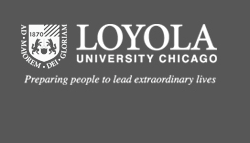Document Type
Article
Publication Date
7-11-2022
Publication Title
Scientific Data
Volume
9
Pages
1-4
Publisher Name
Springer Nature
Abstract
Researchers typically rely on fossils from the Family Bovidae to generate African paleoenvironmental reconstructions due to their strict ecological tendencies. Bovids have dominated the southern African fauna for the past four million years and, therefore, dominate the fossil faunal assemblages, especially isolated teeth. Traditionally, researchers reference modern and fossil comparative collections to identify teeth. However, researchers are limited by the specific type and number of bovids at each institution. B.O.V.I.D. (Bovidae Occlusal Visual IDentification) is a repository of images of the occlusal surface of bovid teeth. The dataset currently includes extant bovids from 7 tribes and 20 species (~3900). B.O.V.I.D. contains two scaled images per specimen: a color and a black and white (binarized) image. The database is a useful reference for identifying bovid teeth. The large sample size also allows one to observe the natural variation that exists in each taxa. The binarized images can be used in statistical shape analyses, such as taxonomic classification. B.O.V.I.D. is a valuable supplement to other methods for taxonomically identifying bovid teeth.
Recommended Citation
Brophy, Juliet K. and Matthews, Gregory J.. Reference database of teeth images from the Family Bovidae. Scientific Data, 9, : 1-4, 2022. Retrieved from Loyola eCommons, Mathematics and Statistics: Faculty Publications and Other Works, http://dx.doi.org/10.1038/s41597-022-01501-4
Creative Commons License

This work is licensed under a Creative Commons Attribution 4.0 International License.
Copyright Statement
© The Authors, 2022.



Comments
Author Posting © The Authors, 2022. This article is licensed under a Creative Commons Attribution 4.0 International License, which permits use, sharing, adaptation, distribution and reproduction in any medium or format, as long as you give appropriate credit to the original author(s) and the source, provide a link to the Creative Commons license, and indicate if changes were made. The images or other third party material in this article are included in the article’s Creative Commons license, unless indicated otherwise in a credit line to the material. If material is not included in the article’s Creative Commons license and your intended use is not permitted by statutory regulation or exceeds the permitted use, you will need to obtain permission directly from the copyright holder. The article was published in Scientific Data, Volume 9, July 2022, http://dx.doi.org/10.1038/s41597-022-01501-4.